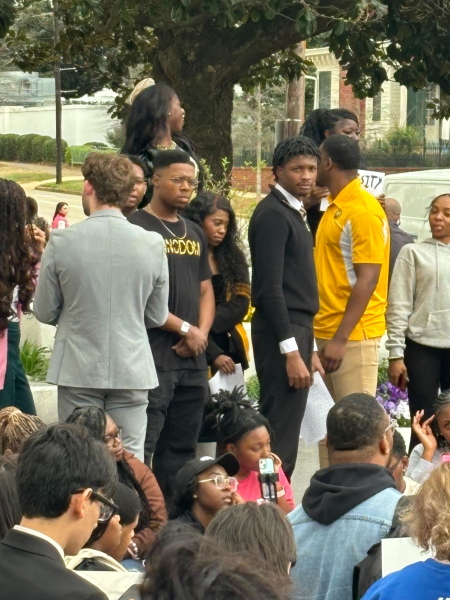Doctor Graham on the Taliban in Kabul
September 2, 2021
Since late 2001, over 2 million servicemen and women have died in Afghanistan, and over 20,000 have been wounded. The decades-long war that has been raging in Afghanistan seems to have become a part of everyday life in the United States.
Many college age students grew up in the aftermath of the Sept. 11 attacks, learning constantly how the events on that infamous day affected the worlds, they were growing up in.
To children who were born in the late 1990s and early 2000s, watching coverage and television specials annually has become a tradition.
In the final months of his presidency, Donald Trump announced announced that he would be withdrawing troops from Afghanistan.
The University of North Alabama’s Political Science Department Chair, Dr. Leah Graham, broke down the factions that had control of Afghanistan before and after Sept. 11.
“The Taliban first came to full power in 1996, stepping into the chaos of post-soviet invasion Afghanistan with the promise of stability for a long conflict-ridden country,” Graham said. “Their name ‘taliban’ [which] translates to “students,” refers to their origin as students in some fairly extreme seminaries in Pakistan.”
Graham also provided information on the extremist group, Al-Qaeda, who were responsible for the Sept. 11 attacks.
“When Al-Qaeda carried out the Sept. 11 attacks, it was argued that both in sheltering them and then refusing to give up that shelter after Sept.11, the Taliban also became a target alongside Al-Qaeda in the offensive that began in October of that year,” said Graham.
In 2016, Trump was elected as president and one of his promises was to end the war in Afghanistan and to bring our troops home. In February of 2020, Trump began talks with the Taliban, without consulting the Afghan government and said that his administration set a date for full withdrawal of United States troops from Afghanistan.
With this agenda set, it seemed that newly elected President Joe Biden had no other option than to fulfill former President Trump’s promises.
“We’ve been discussing withdrawal for a long time,” Graham said. “More importantly, we’ve been gradually pulling down occupying forces in hopes that the national forces could maintain control in a fight, even when the odds were stacked against them.”
This means that President Trump did strike a deal with the Taliban to begin withdrawing United States troops, but this was discussed many times before Trump took office.
Another question that has been asked so many times is, “how did the Afghan government fall so easily to the Taliban who have not been in control in over two decades?”
“Afghanistan is generally regarded as a place that even great powers cannot control, despite the fact that it has had periods of stability,” Graham said. “The Soviet invasion was disastrous, and the idea of nation building always required far more intensive effort than even the combined NATO forces gave it.”
“The Taliban has maintained its fight against the combined coalition forces throughout and even had frequent territorial gains,” Graham said. “In other words, it was always waiting in the wings.”
Many watching the events unfolding in Afghanistan wonder what the United States is doing to help Afghan citizens who helped the U.S. during the war.
“We do have emergency asylum options for populations fleeing imminent danger. Further, many of those in danger are so because they helped us and other coalition forces,” said Graham.
“We tend to take a small number relative to our size though,” Graham said. “Further, most refugees from any unstable area cannot flee on planes, They will flee into surrounding countries.”
There are still thousands of United States citizens, translators, etc. who are still trapped in Kabul, the capital of Afghanistan. President Biden met the Group of Seven Leading Nations or “G-7,” which include France, Germany, Italy, Japan, the United States, the United Kingdom and Canada. This meeting was held last week and discussed if aid would be sent to Afghanistan, not just to help evacuate American citizens, but Afghan refugees as well and to help the humanitarian crisis that is soon to follow.
“The British, for example, have made no agreement to the Aug. 31 deadline. They will attempt to help as well, but there likely aren’t enough troops to do so,” Graham said. “I’m not sure how this will play out but the situation is precarious.”
Many Americans who identify as members of the Democratic or Republican parties are speculating about who is to blame for this crisis: President Biden or President Trump?
“Is there a single individual at fault? Absolutely not,” Graham said. “Every administration has made blunders, large and small. This was always going to be an ugly withdrawal. However, had we focused our attention more strategically on the effort in Afghanistan initially instead of being spread thin, maybe it could be a far different place today.”











